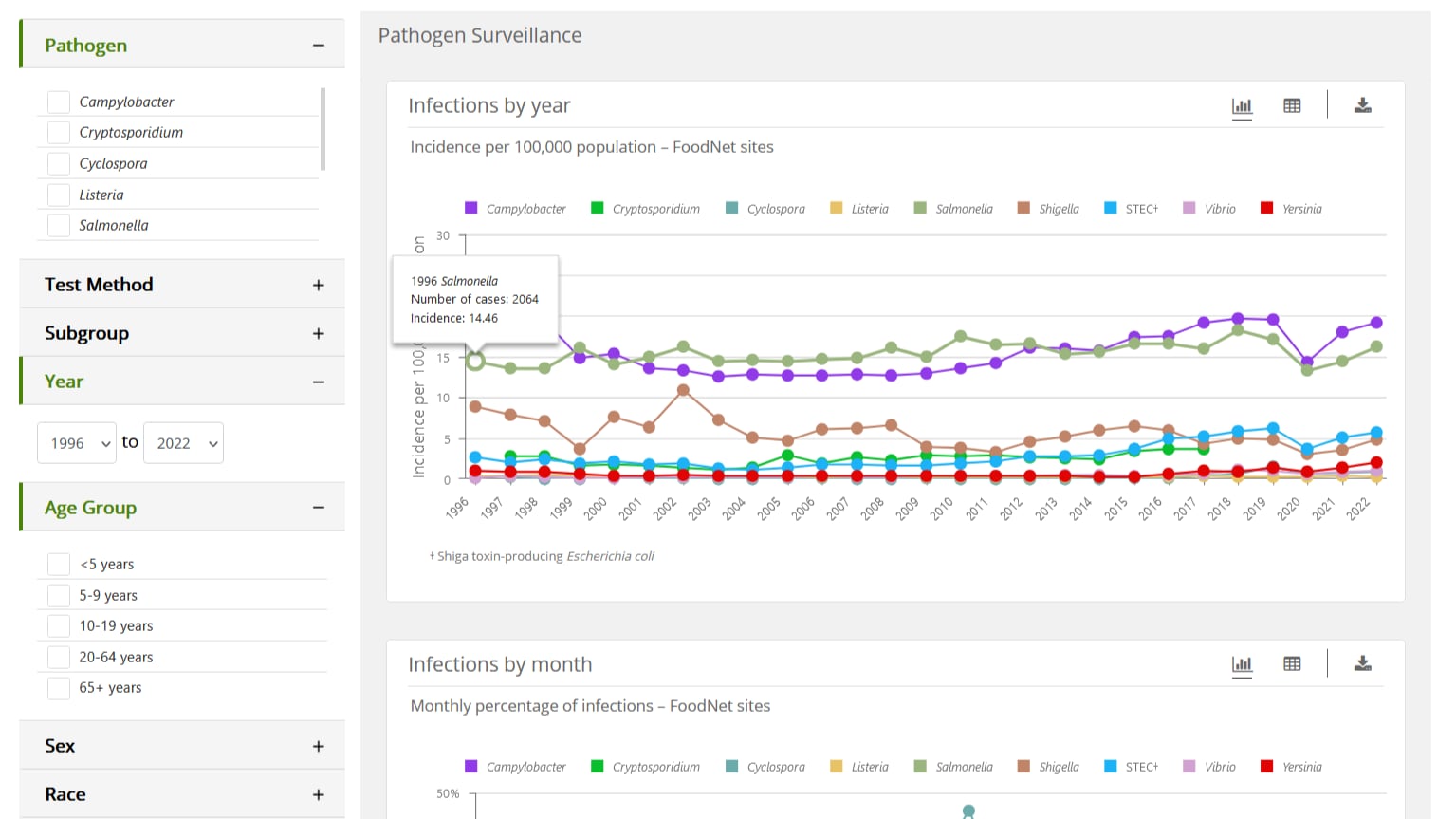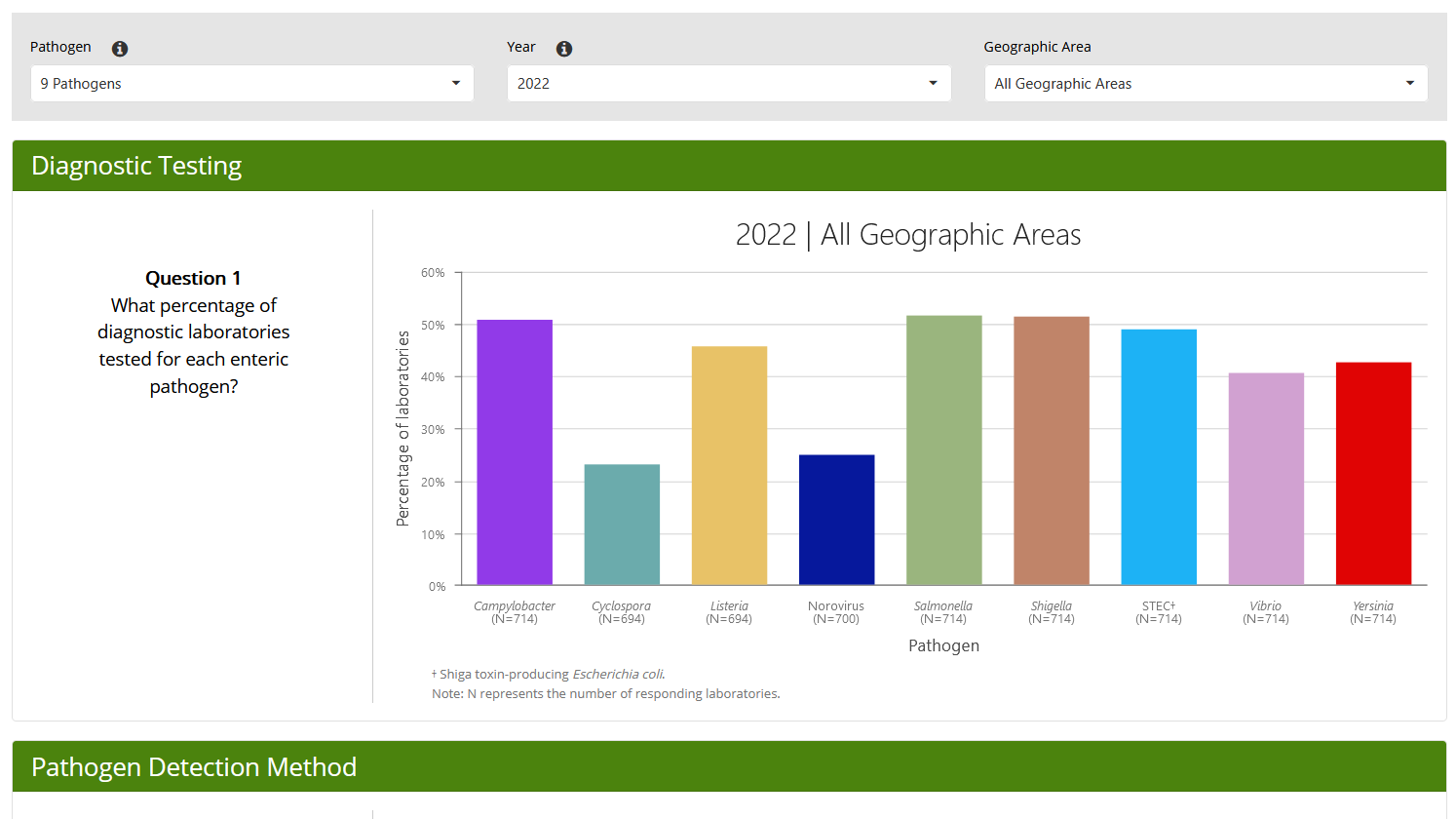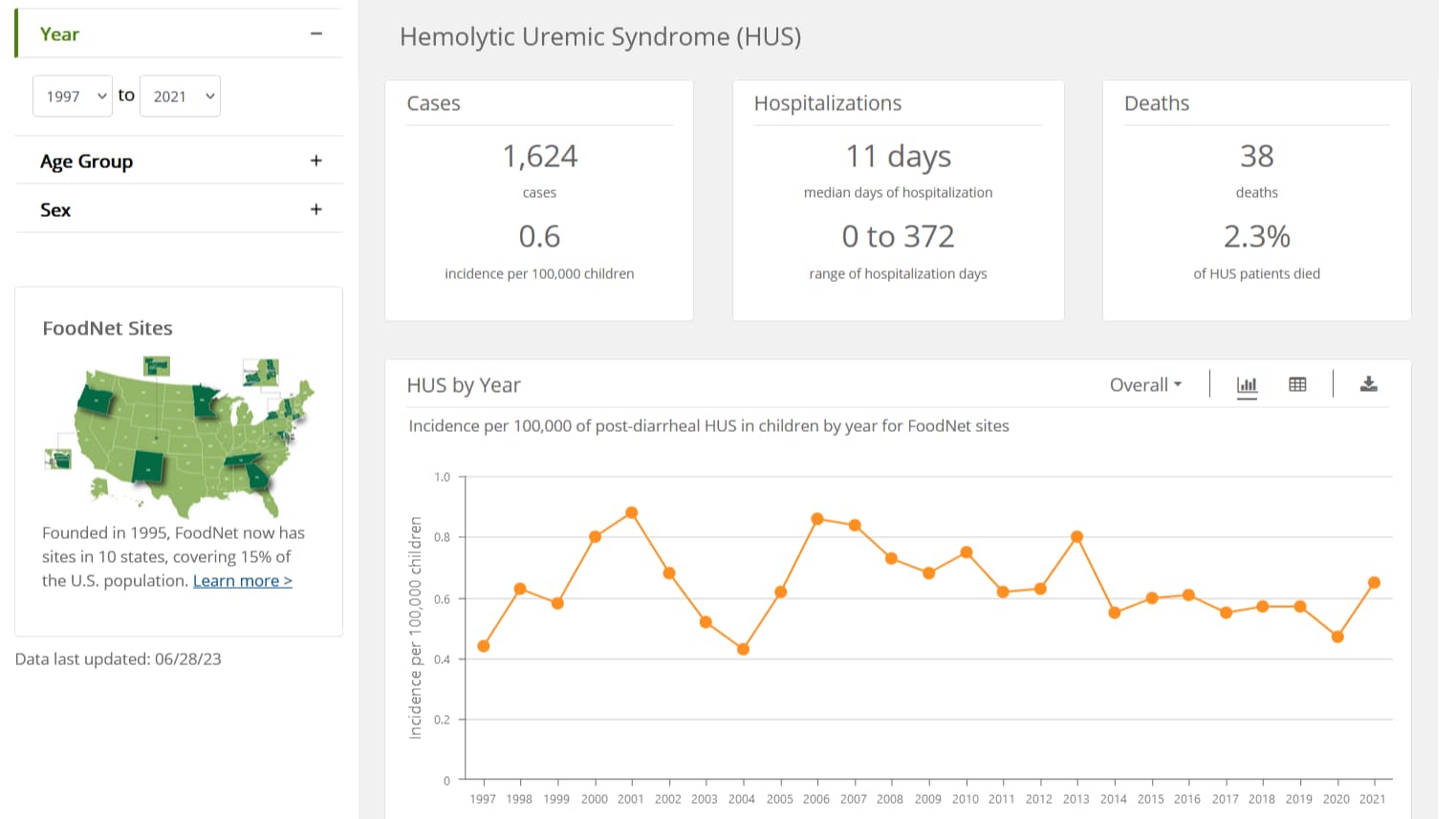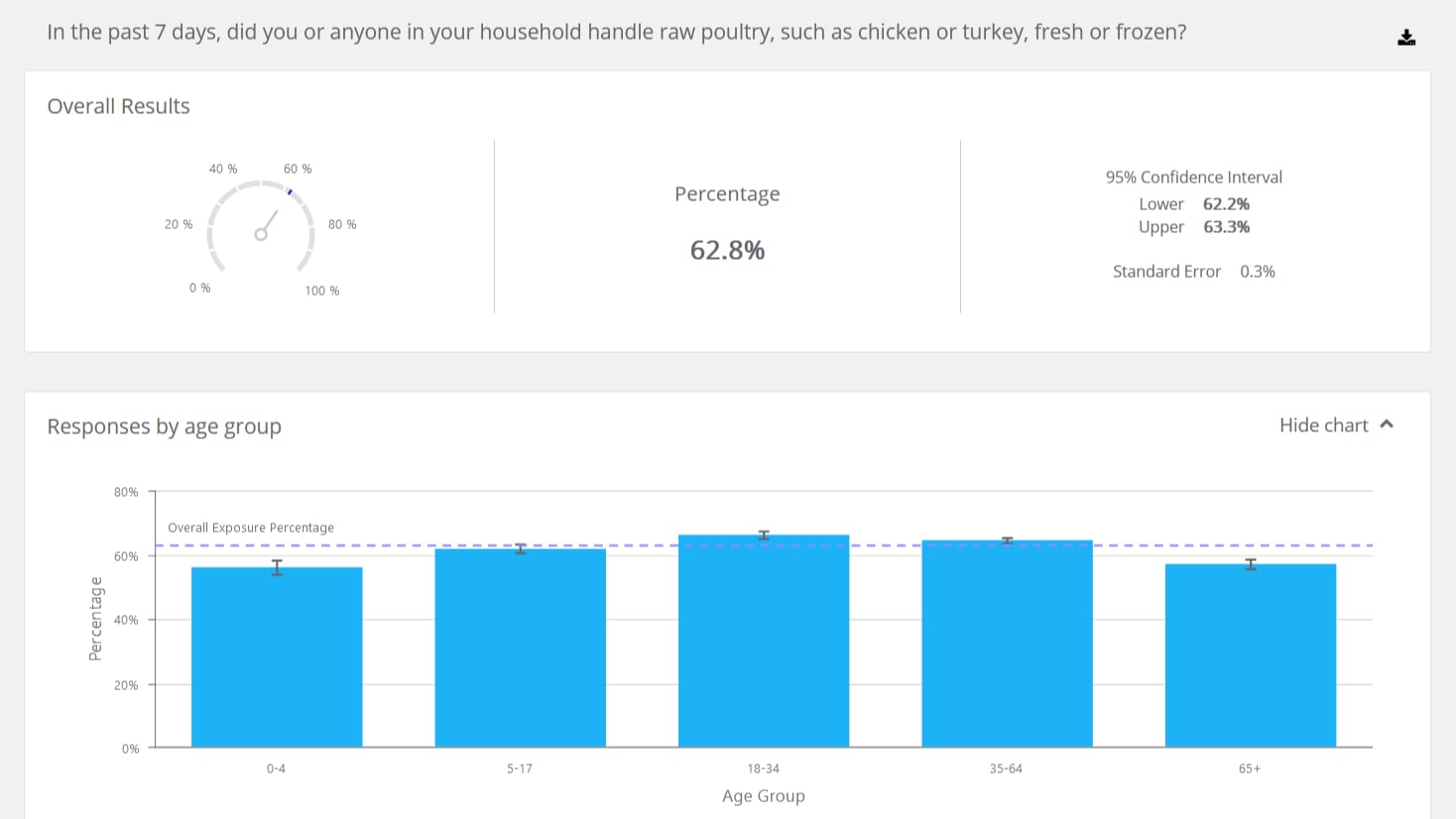What to know
- FoodNet Fast provides online access to information reported to the Foodborne Diseases Active Surveillance Network (FoodNet). FoodNet's surveillance area includes about 16% of the U.S. population.
- You can use FoodNet Fast tools to search data and see results displayed on interactive graphs and charts.
- FoodNet Fast provides online access to information reported to the Foodborne Diseases Active Surveillance Network (FoodNet). FoodNet's surveillance area includes about 16% of the U.S. population.
- You can use FoodNet Fast tools to search data and see results displayed on interactive graphs and charts.
Pathogen Surveillance Tool

See how rates of illness have changed in FoodNet's surveillance area since 1996 for nine pathogens transmitted commonly through food: Campylobacter, Cryptosporidium*, Cyclospora, Listeria, Salmonella, Shiga toxin-producing E. coli (STEC), Shigella, Vibrio, and Yersinia.
Diagnostic Laboratory Practices Tool

Find out how diagnostic testing practices in FoodNet's surveillance area have changed over time for 10 pathogens: Campylobacter, Cryptosporidium*, Cyclospora, Listeria, norovirus, Salmonella, STEC, Shigella, Vibrio, and Yersinia.
Hemolytic Uremic Syndrome (HUS) Surveillance Tool

HUS is a life-threatening condition, most often triggered by STEC infection. See how rates of pediatric HUS and STEC infection have changed in FoodNet's surveillance area since 1997.
Population Survey Tool

See how often people in FoodNet's surveillance area eat particular foods and have other exposures linked to diarrheal illness, and compare exposures for different groups of people.
Background information
Data in FoodNet Fast come from FoodNet.
Public health officials in state and local health departments obtain reports from all laboratories in FoodNet sites about diagnosed infections from pathogens transmitted commonly by food. FoodNet personnel in Colorado, Connecticut, Georgia, Maryland, Minnesota, New Mexico, Oregon, Tennessee, and selected counties in California and New York.
Information about diagnostic testing practices comes from surveys that state and local health departments administer to diagnostic laboratories in the surveillance area.
Information about HUS cases comes from a network of pediatric nephrologists and infection control practitioners and from review of hospital discharge data by state health officials.
Data in FoodNet Fast do not represent all of the United States. FoodNet Fast only includes information from FoodNet's surveillance area: Colorado, Connecticut, Georgia, Maryland, Minnesota, New Mexico, Oregon, Tennessee, and selected counties in California and New York. This surveillance area includes 16% of the U.S. population.
The citation depends on the FoodNet Fast tool used.
Pathogen Surveillance Tool
Centers for Disease Control and Prevention (CDC). FoodNet Fast: Pathogen Surveillance Tool. Atlanta, Georgia: U.S. Department of Health and Human Services. Available from URL: http://wwwn.cdc.gov/foodnetfast. Accessed MM/DD/YYYY.
Diagnostic Laboratory Practices Tool
Centers for Disease Control and Prevention (CDC). FoodNet Fast: Diagnostic Laboratory Practices Tool. Atlanta, Georgia: U.S. Department of Health and Human Services. Available from URL: http://wwwn.cdc.gov/foodnetfast. Accessed MM/DD/YYYY.
Hemolytic Uremic Syndrome Surveillance Tool
Centers for Disease Control and Prevention (CDC). FoodNet Fast: Hemolytic Uremic Syndrome Surveillance Tool. Atlanta, Georgia: U.S. Department of Health and Human Services. Available from URL: http://wwwn.cdc.gov/foodnetfast. Accessed MM/DD/YYYY.
Population Survey Tool
Centers for Disease Control and Prevention (CDC). FoodNet Fast: Population Survey Tool. Atlanta, Georgia: U.S. Department of Health and Human Services. Available from URL: http://wwwn.cdc.gov/foodnetfast. Accessed MM/DD/YYYY.
